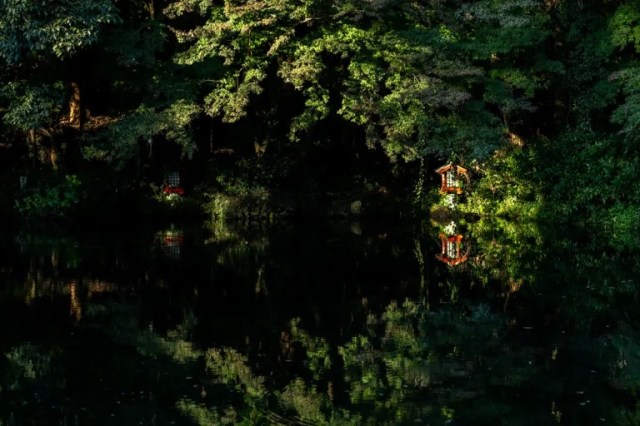Quiet tradition and sweetness are ready at Fujisan Hongu Sengen Taisha.
In recent times, Japan’s most outstanding temples and shrines have turn out to be more and more crowded, notably as surging inbound worldwide vacationer numbers create a relentless stream of vacationers in search of intrinsically Japanese sights to see. We might spend a number of days debating the professionals and cons of this, weighing the lack of solemn quietude in opposition to the revitalization of the encircling communities, and even bearing in mind the secular, sightseeing-like appeals of shrine/temple journey that Japanese home vacationers have loved for generations.
Nonetheless, there’s no denying that probably the most main shrines and temples of Tokyo, Nara, and Kyoto specifically have gotten not less than slightly too crowded for some individuals’s tastes as of late. With the Japan journey increase not exhibiting indicators of slowing down anytime quickly, it may be time to start out exploring locations slightly farther off the completely overwhelmed vacationer path, and that just lately took us to Fujisan Hongu Sengen Taisha within the city of Fujinomiya, Shizuoka Prefecture.

If these mentions of “Fuji” have you ever considering of Mt. Fuji, you’re spot-on. Fujisan Hongu Sengen Taisha is the top shrine of the numerous Sengan shrines (additionally generally known as Asama shrines) that may be discovered throughout Japan, and their major object of worship is Mt. Fuji.

Fujisan Hongu Sengen Taisha is probably not as opulent or as suited to implementation as social media like-bait as Japan’s extra well-known shrines, however it has a quiet fantastic thing about its personal, and likewise loads of cultural significance. The present principal constructing was constructed in 1604 with shogun Tokugawa Ieyasu as its sponsor, however the shrine itself is alleged to have been based roughly 2,000 years in the past. Sitting to the southwest of Mt. Fuji, Fujisan Hongu Sengen Taisha is alongside the route pilgrims to the mountain would tackle their means from Kyoto, incomes it a status as the normal “entrance” to Japan’s tallest mountain earlier than the capital was moved to Kyoto and journey patterns shifted in order that extra guests now strategy Mt. Fuji from the north and east.
Fujisan Hongu Sengen Taisha can be related to Konohanasakuya-hime. Konohanasakuya-hime, also called Sakuya-hime for brief, is a goddess who seems in Japanese folklore, the place she’s sometimes called some of the stunning of all divine beings. When Sakuya-hime grew to become pregnant shortly after her marriage to the god Ninigi-no-Mikoto, in an effort to show that the kids she was bearing have been certainly her husband’s, Sakuya-hime sealed herself in a hut and set it ablaze, asserting that the flames wouldn’t hurt Ninigi-no-Mikoto’s youngsters, and the next protected delivery of three wholesome boys led to Konohanasakuya-hime being seen as a supply of divine safety in opposition to fires and supplier of protected births.

Close to the doorway to the shrine is a stream, and following it only a quick methods upriver brings you to Wakutama Pond and its pristinely clear water.

The pond fashioned some 10,000 years in the past, carved into the earth by lava flowing from Mt. Fuji. As soon as the basin cooled and hardened, it crammed with rain and winter snow melting from the mountain, and pilgrims on their approach to summit Fuji would first purify their our bodies by bathing within the pond.


Fujisan Hongu Sengen Taisha is particularly pretty within the spring, when the a whole bunch of cherry blossom bushes on its grounds flower, and the shrine additionally holds demonstrations of yabusame (horseback archery) every Could. Making an low season go to, although, allowed us to absorb the sights with out preventing crowds, one thing that’s turning into more durable to do at many different shrines as of late.
▼ This form of two-story building is a novel architectural trait of Sengen/Asama shrines.

On the identical time, Fujisan Hongu Sengen Taisha is a comparatively simply accessible place to go to. It’s only a 15-minute stroll from Fujinomiya Station on the Minobu Line (which connects the Mt. Fuji space with Kofu, Yamanashi’s prefectural capital metropolis), and about half-hour by taxi/bus from Shin Fuji Station on the Tokaido Shinkansen.
▼ The stroll from Fujinomiya Station to Fujisan Hongu Sengen Taisha
▼ The city of Fujinomiya itself additionally provides ample journey facilities, like this cafe we discovered on the strategy to the shrine grounds.


So must you ever catch your self sighing, grinding your enamel, or in any other case upset about how crowded a few of Japan’s shrines and temples are getting, simply keep in mind that there are extra to find with slightly further looking out.
Associated: Fujisan Hongu Sengen Taisha
Photographs ©SoraNews24
● Wish to hear about SoraNews24’s newest articles as quickly as they’re revealed? Comply with us on Fb and Twitter!





